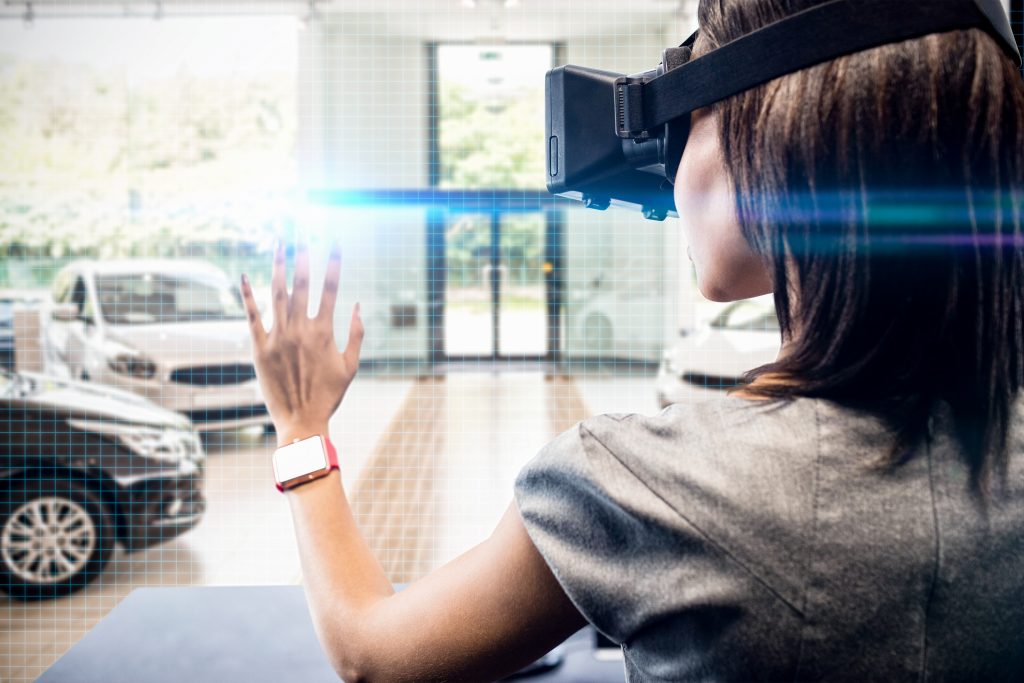In this article we take a look at the year ahead and highlight some of the key trends we expect to see influence the retail industry in 2022.
The past two years have been ‘unusual’ for everyone associated with the retail industry. We saw some big names fall and experienced disruption after disruption. Many of the trends we will discuss in the following paragraphs stem from the challenges the past two years have presented, so before we look forward, let’s take a brief look back.
In 2020, mass closures and stay-at-home lockdowns were highly disruptive for retailers as rules and regulation shifted and changed. Even when shops were allowed to open, there were restrictions to contend with and consumer anxiety to conquer. On an individual level, we were all battling to come to grips with what we were personally comfortable doing and what precautions we expected when we did venture out. For most retailers, 2020 was about survival, pure and simple.
In 2021, demand returned and the key challenges shifted from closures to uncertainty, supply chain disruption and staff shortages.
As we continue into 2022, and with consumer demand expected to maintain its resurgence, it’s important to look forward and anticipate what challenges and opportunities retailers can expect. Smart retailers, and those most likely to succeed, are the ones who be able to convert challenges into opportunities.
In this article we have compiled the 11 key retail trends we predict will impact the retail industry this year.
1. In-store experiences more important than ever
For many years now, ‘experience’ has been acknowledged as the key differentiator in retail, both online and offline. The brands that can deliver the best experiences win the business and loyalty of the most customers. What’s also known is that physical stores provide a more powerful vehicle for those experiences than their online equivalents. While the pandemic has boosted online performance for many industries, every expert agrees that physical retail is able to deliver experiences that online retail will never be able to emulate.

Physical retail is expected to see even more of a post pandemic boost as consumers bounce back to their old ways. They may have been happy to shop online but many still prefer to be in a store touching and trying on products.
We expect 2022 to see retailers invest heavily in offering even more immersive, meaningful and impactful experiences in their physical stores. With more and more transactions taking place online, physical retail will continue to shift from a sales focus to prioritizing reaching new customers, building brand loyalty and gathering insight.
This means physical retail is no longer about maximizing every inch of floor space in a quest for sales. Retailers will continue to shift their physical strategies to connect with customers, confident their digital offerings will cover any perceived loss in sales. Physical experiences driving online performance.
Technology will play a serious part here, including augmented reality, live streaming and hybrid online offline customer journeys.
2. Offline and online experiences are one and the same
For many years, predictions and articles like this have been talking about the merger of digital and physical retail, so it’s probably no surprise to see it once again feature prominently. In the previous trend we talked about the benefits a physical store offers over a digital one, but in reality, retail of the future is a successful combination of both. It’s well known the pandemic left customers hungry to visit stores, touch products and have more physical experiences. Retailers should look to use this as they continue to merge the digital with the physical. Customers cannot be allowed to continue seeing the physical and the digital aspects of a brand as separate entities.
Retailers will continue to blur their in-store experiences with their ecommerce offerings. These offline and online hybrids should not only recognise and reward customers as they jump from one to the other but also feel seamless and consistent. Again, technology will play a huge role here and we expect to see many retailers invest heavily in live streaming, in-store tech and, on a more basic level, Instagram Stories.
3. In-store technology even more prominent
The first two trends have highlighted that the physical experience is getting closer and closer to the ecommerce world so it’s no surprise that in-store technology will be key. Linking the digital to the physical requires not only intelligent CRMs and responsible data management but the right technology.

We expect retailers to invest heavily in technology for their physical stores in 2022. This could be complex live streaming capabilities but could be as simple as equipping staff with tablets. Technology will be used to unlock consumer insight at key points of the customer journey to deliver more powerful experiences. A salesperson with a tablet could have access to a customer’s purchase history, favorites and shopping lists. With this information at their fingertips retailers will be able to provide a more personalized experience, letting customers know about new arrivals, flagging any relevant discounts and making style suggestions.
4. More flexible retail
Retailers are unlikely to sign long-term leases of 5-10 years. This isn’t a huge secret. It’s a trend we have been seeing for a while but the past two years the pace of that change has accelerated. Uncertainty means traditional retailers are less willing to take on the risks of long-term leases and prefer shorter-term commitments.
With physical stores needing to focus more on delivering brand experiences and existing in synergy with online offerings, smaller stores that shift location frequently have become far more attractive. What’s more, digital-first brands are not interested in long-term commitments. They’re trialling physical retail and don’t want the risk but do want reach and flexibility. They are the ones with the power now, not the landlords.
The concept of ‘flexible retail’ is becoming less a pipedream and more a reality. Brands want the ability to swap and change the experiences they deliver and the locations they reach. Whether it’s pop-up stores, showrooms, product launches or flagship stores that move around key cities and neighborhoods, brands are demanding flexibility and the traditional lease models are having to evolve.
We predict 2022 will see an ever greater adoption of and demand for ‘flexible retail’ as brands look for ways to impactfully reach and engage with customers while experimenting with innovative methods.

5. Supply chains
Supply chains were stretched to breaking point in 2021. As demand increased, the old processes creaked under the pressure of labor shortages, Covid-19 restrictions and inconsistent surges in demand. This resulted in empty shelves, delayed deliveries and out of stock labels across the globe.
While many of the supply chain challenges have eased somewhat, everything is still not fully back to normal and everyone in retail is nervous of a repeat. It’s fairly easy to see that supply chains have been hugely under considered over the years and many retailers may need a rethink.
We predict that 2022 will be a year for many retailers to rethink, evaluate and invest in their supply chains. Existing supply chains are not agile and it’s this flexibility that is required in order to deal with future disruption.
While there is no silver bullet, retailers will look to build resilience by spreading the risk. This could be opening multiple smaller locations, moving inventory to multiple warehouses and offering flexible delivery options. Some retailers may even start moving production closer to home.
6. Relationship with staff
When the pandemic first hit, stores were shut and everybody stayed at home. When things started to open, many industries, including retail, struggled to find enough staff as people reconsidered their careers and options. Many retrained and many moved away. Bars, restaurants, hotels and shops found themselves short of staff. Similar challenges arose in warehouses and logistics, contributing heavily to many of the supply chain issues we covered in the previous trend.
As the world learns to live with Covid-19, retailers are going to have to learn to cope with absences from unwell staff and those forced to isolate. In addition, the pandemic has taken a huge toll on mental health and employers must be understanding and take steps to support their staff.
In 2022 we expect many retailers to reinvent their HR processes as they attempt to attract and retrain staff. Competition is high for these guys so we expect to see increased salaries, benefits and work perks. For the first time in many years the power lies with the employees.
7. Fashion and apparel back with a bang?
In 2020 nearly two million US adults didn’t buy a single item of clothing and that trend was repeated elsewhere in the world.** With lockdowns and economic uncertainty, people didn’t see the need to splash out on new outfits for working from home and Zoom calls. By contrast, in 2021 nearly two thirds of US consumers said their wardrobes needed refreshing and many industry experts are predicting rapid growth in 2022, especially in luxury and sportswear.***
We predict the fashion and apparel industry will continue to bounce back in 2022 although there will be inconsistencies across different regions and markets. Fashion Weeks will return in style but with all the innovations of the past two years, such as live streaming and virtual capabilities, baked into their standard offerings.

8. Rising inflation could put pressure on consumer expenditure
While the exact scale of the impact of the pandemic will vary across different countries and economies, it’s safe to say that the world has taken an economic hit. Vaccine roll outs, employee relief and social support measures will take a toll financially and rising inflation is widely predicted. We’re already starting to see it and if the rising cost of goods continues, combined with increasing interest rates, consumers will likely start to feel the pinch.
What this means for retailers is less discretionary spend up for grabs. Retailers will have to work harder to persuade customers to shop with them and consumers may look to other forms of credit. We predict a greater adoption of ‘buy now, pay later’ options as alternatives to credit cards.
9. Retailers expand into services
Over the past 10 years we have seen an evolution of what it means to be a retailer. No longer is it simply about ‘just’ selling a product in a store. Now retailers not only offer products, they also offer services, and we see this trend only increasing in 2022.
These services include resale, returns, personal shoppers, deliveries and partnerships that all provide additional revenue streams while also contributing to the overall customer experience. Retailers that develop systems, services and processes will look to monetize innovation by selling services to other retailers. Perhaps using partnerships to share breakthroughs.
For smaller retailers this means branching into offering lessons, talks and advice. A bike shop offering repairs or fittings for instance. These are additions to existing offerings and bring in more revenue.
Retailers will look to grow partnerships with other brands who share similar demographics and brand experiences. Partners should be carefully selected so that they don’t compete and add to the experience. Soap and candles for instance.
10. Private labels continue to proliferate
Gone are the days when private labels (also known as ‘owned-brands’) are the cheap and boring options. These days, larger retailers own huge multi-million dollar brands that compete against many established luxury brands for consumer spend. Athletic stores, home stores and generalist retailers are all launching their own private labels and we see this trend continuing strongly in 2022.
With inflation creating a squeeze on customer spending, more affordable private labels will be perfectly positioned to grow market share.
11. Automated technology plugs the labor gap
Having already addressed the challenges retailers face in 2022 regarding staffing, the final trend we want to highlight is the increase in automation and technology that will be used to bridge the labor gap. Regardless of how well employers adapt their HR processes, widespread gaps are likely to still appear and retailers will look to invest in automation to reduce the amount of manual involvement required.
This change isn’t just for-in store processes, far from it. All the way down the supply chain, investment will be made to automate placing and tracking orders, managing loyalty programs and customer communication. We predict that many retailers will look at their existing processes and focus on updating and automating wherever possible.
Conclusion
2020 and 2021 were highly volatile and difficult to navigate for everyone in the retail industry. Many trends we were already seeing, such as the blurring of digital and physical, have been accelerated as the impact of lockdowns acts as a catalyst for existing change. As we consider what 2022 holds for the industry, it is obvious that opportunities lie in two clear camps – recovering from the immediate impact and embracing new trends to come back stronger.
As the retail industry continues to evolve, the retailers who stay agile and adapt to customer demands will be the ones who come out stronger, in 2022 and beyond.
*Source.
**Source.





